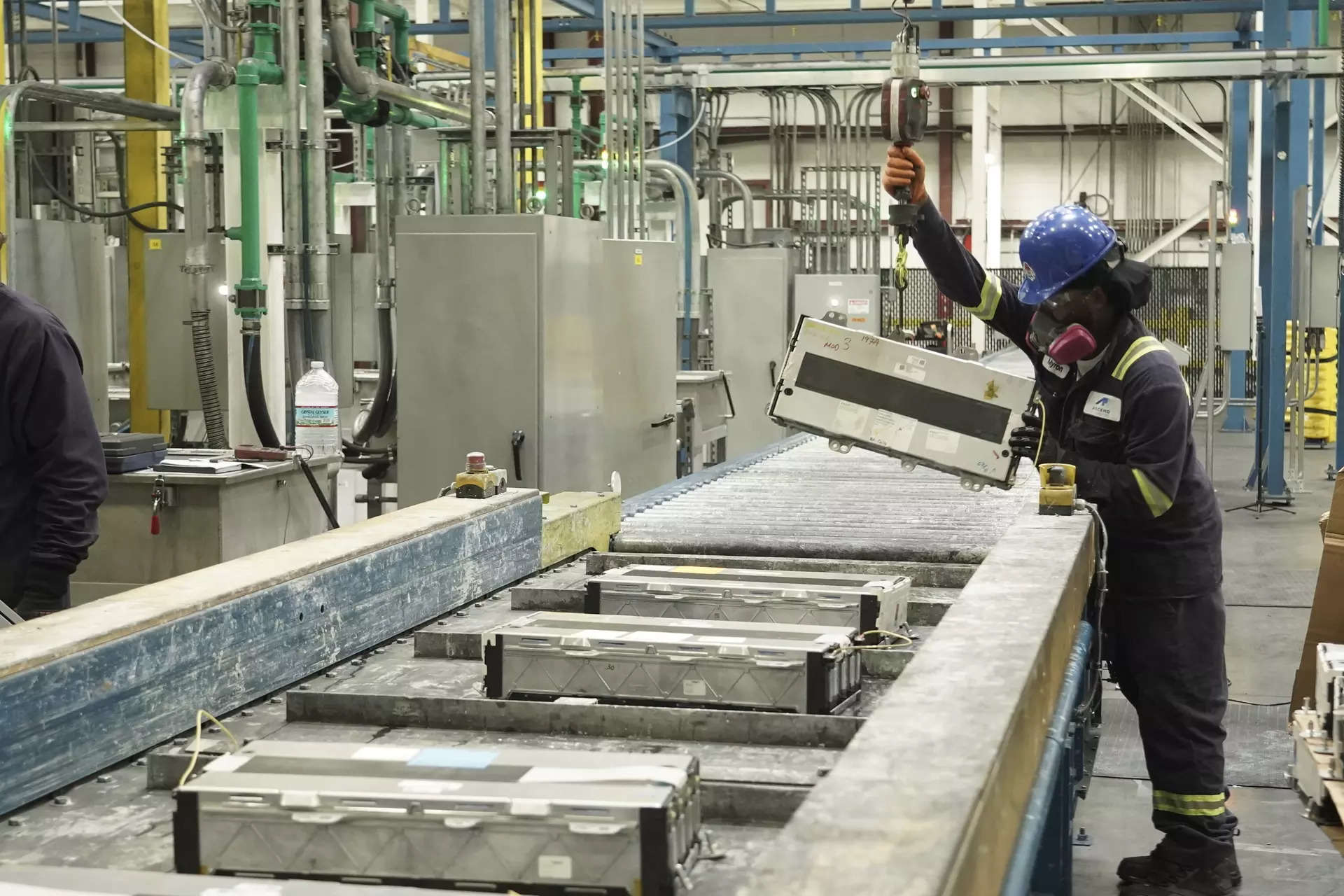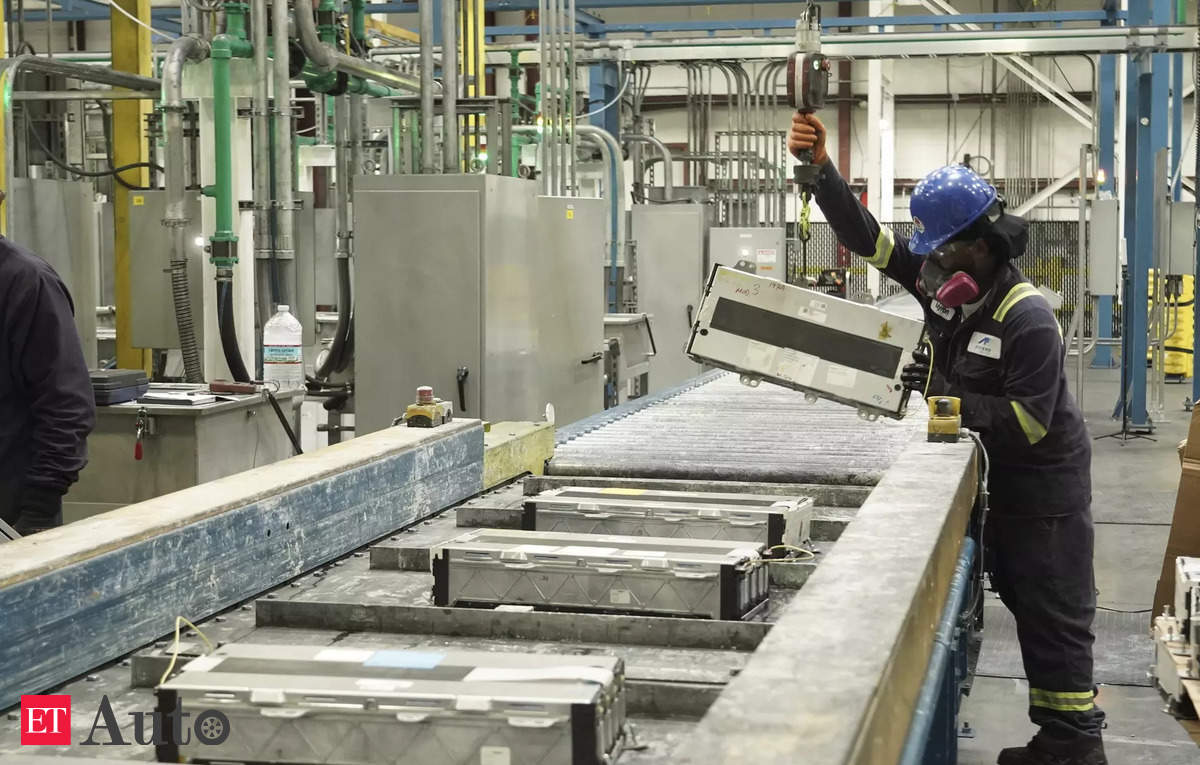
New Delhi: Lohum, a leader in the battery recycling domain, plans a four-gigawatt hour capacity expansion for recycling and intends to establish a cathode active material plant with a two-gigawatt hour capacity. Speaking with ET Energyworld, the company’s Founder and CEO, Rajat Verma, highlighted the increasing demand for recycling, pointing out that over half a million tonne of batteries currently await recycling, a figure projected to rise to approximately 5 million tonne by decade’s end.With global infrastructure struggling to handle this waste, Lohum is strategically expanding its capacity to serve the global battery waste market. The recycling process not only proves more efficient, curbing about 100 kilograms of CO2 equivalent emissions for every kilogram of recycled battery, but is also about 30 to 40% more economical than fresh extraction of materials.
Emphasizing the sustainability advantages, Verma shared the company’s ambition to offset around 5 million tons of CO2 equivalent by 2026 and described Lohum as operating essentially as a net-zero entity. Edited excerpts:
Q: Can you shed light on your inspiration for entering this domain and how it relates to the broader energy transition objectives?
A: Early in the energy transition phase, we recognized a potential shift towards cleaner energy sources driven by a material transition. We believed materials would play a pivotal role. Our initial perspective highlighted the importance of these materials, with countries outside China needing tailored strategies. We resolved to explore production and secure these materials sustainably. Consequently, we identified recycling as vital for material production. This approach allows different geographies to utilize materials already present in their region, marking our journey’s inception.
Q: With the rise in renewable energy and EV adoption, how do you foresee the demand for your process? And its role in curbing the industry’s carbon footprint, particularly for EVs?
A: Recycling inherently is more efficient than extracting materials from the earth. To put it in perspective, every kilogram of recycled battery curtails about 100 kilograms of CO2 equivalent emissions. The demand trajectory has surged. Presently, over half a million tons of batteries await recycling. We project this to escalate to around 5 million tonne by decade’s end. The global infrastructure to handle this waste is presently inadequate. This shortfall is why our company is ambitiously expanding its capacity to cater to the global battery waste market.
Q: Can you delve into the economic feasibility of recycling battery materials compared to fresh extraction, especially in the sustainability context?
A: Recycling, by its very essence, has a diminished carbon footprint. It necessitates fewer chemicals, power, and energy for material extraction, making it inherently more economical than ground extraction. The process’s financial aspects hinge on whether you’re purchasing or being compensated for the material. However, that’s business-specific. Fundamentally, recycling remains less expensive than conventional extraction methods.
Q: What’s the allure of opting for recycled or repurposed batteries in terms of cost compared to new ones? Are there financial advantages for consumers?
A: There is a dual consideration. Economically speaking and then looking at the larger carbon footprint. Let’s not forget that every entity in the EV business is vying for a net-zero target, either overtly or otherwise. The end goal is ensuring a green process from production to asset disposal, batteries in this context. At its core, recycling uses a lesser carbon and water footprint than mining. This means significant savings on carbon emissions and water consumption in our recycling processes. Additionally, recycling requires less energy, power, and chemicals for material extraction. This intrinsic cost-efficiency of the process translates to savings for our customers.
Q: Can you elucidate the pricing differential between recycling and extraction?
A: To put it numerically, recycling stands to be around 30 to 40% more economical than extracting materials from the ground.
Q: What strides are you making towards carbon footprint reduction and your targets for a zero-net transition?
A: Our ambition is clear: offset about 5 million tons of CO2 equivalent by 2026. In essence, we’re already operating as a net-zero entity. The materials we produce have a significantly lower carbon footprint than their mined counterparts. While we haven’t made an official announcement, we’re theoretically generating negative carbon credits.
Q: How instrumental is technology in enhancing the recycling process’s sustainability and efficiency?
A: Technology is pivotal. Superior technology ensures high yields at reduced costs. And reduced costs typically mean a smaller energy and chemical footprint. Our edge lies in our best-in-class technology, not just nationally but globally. This enables us to establish factories with minimal capital expenditure and operate them at reduced operational costs. This efficiency is rooted in our proprietary material processing technology.
Q: Are there any impediments in sourcing used batteries?
A: In the broader spectrum, not really. However, within India, there’s an imperative concern. The e-waste sector has witnessed a surge in an unorganized market due to excessive licensing by authorities. Our appeal to the government is to ensure the recycling domain is populated by genuine players, committed to proper procedures and adhering to ESG standards.
Q: Given the government’s focus on energy storage, what is your company’s strategy and collaborations concerning renewable energy storage like solar and wind?
A: Alongside recycling, we repurpose batteries. We repurpose old electric vehicle batteries into energy storage batteries. Our deployments in the market span a variety – from small one kilowatt hour products to half a megawatt hour ones. These provide backup solutions, catering to homes, retail outlets, and commercial or industrial setups. We’ve innovated integrated solutions combining the battery and power conversion system.
Q: Could you shed light on your energy storage capacity?
A: Our capacity stands at 300 megawatt hours per annum. We are in the initial stages of energy storage transition. As the market matures, we foresee a rapid scale-up.
Q: Are there any capital expenditures you foresee in this direction?
A: Presently, our CapEx for energy storage seems sufficient for the upcoming year. However, we do anticipate an additional 200 crore of CapEx for battery materials in the next calendar year.
Q: How do you foster collaboration with stakeholders in the battery lifecycle, from manufacturers to end consumers? Are there any incentives or schemes to promote the return of used batteries?
A: We assure optimal value for returned batteries, which inherently acts as a financial incentive. We liaise with policymakers to ensure the framing and implementation of beneficial policies. In parallel, we are deepening our collaboration with OEM partners to roll out collection points nationwide, making it easy and safe for consumers to return used batteries.
Q: In your perspective, what policy recommendations would encourage sustainable battery lifecycle practices? Are there any existing deterrents?
A: The foundation of policy is set. The crux lies in its execution. The focus should be on vetting the entities involved in the battery lifecycle, ensuring they possess the necessary technology and capacity. It’s crucial given the hazardous nature of batteries. They contain flammable and toxic substances, posing potential threats. Our plea is to minimize exposure to these risks for our citizens.
Q: On collaborations, are you branching out with other sectors or industries to magnify the scope and impact of battery recycling?
A: Our collaborations span the automotive OEM sector. Beyond that, our engagements are prominent with entities in the energy storage domain, especially those in the renewable energy sector. Additionally, we’re progressing with a four-gigawatt hour capacity expansion for recycling. Furthermore, we’re venturing into setting up a cathode active material plant with a planned two-gigawatt hour capacity.
Q: Are there any plans to setoff-grid charging systems?
A: Yes, we’re in dialogue with state governments, including Uttar Pradesh, on this front. Although we won’t directly operate the charge points, our partners will. We’re essentially the solution providers, offering repurposed batteries and an integrated power conversion system. Our vision is to offer a comprehensive off-grid solution amalgamating solar and battery power.
Q: Fast forward five to ten years, where do you envisage your company and the larger battery recycling industry?
A: We aspire to be at the forefront of critical material production, which is a pivotal segment in the battery value chain. Our ambition is not just to cater to the domestic market but to be a significant player in the international landscape, offering critical materials vital for battery production.
Q: Could you share your insights on the Production Linked Incentive (PLI) scheme and its impact on your operations?
A: Presently, a direct PLI scheme for the battery materials industry is absent. We’ve been advocating for its introduction in our sector. While we are indirect beneficiaries of the PLI scheme within the cell manufacturing domain – thanks to the emphasis on local content and being the sole producer in India – we do feel a direct PLI scheme would be more beneficial.
Q: Regarding the recent lithium discovery in Jammu & Kashmir, what are your thoughts?
A: The discovery has stirred optimism. The industry is still evaluating the quality and potential of the discovered material. It’s commendable in terms of the size of the resource. The pace at which it turns beneficial largely rests on the government’s alacrity in auctioning the blocks to private players for comprehensive analysis.









